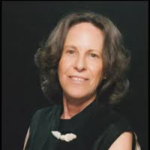The Gift of Meditation for Elders
By Connie Zweig, Ph.D.
During the decades that I taught hundreds of people how to attune to the inner voices in their shadows, I also have urged them to meditate. In response, people have asked Why.
If we allow into conscious awareness those thoughts and feelings that we most fear and dread — our rage, shame, envy, inferiority, abandonment — we need to be grounded in something larger than our individual identity, something beyond ego that lies within each of us. We need to cultivate and dwell in the silence of pure awareness in meditation so that when we feel overwhelmed by a shadow character and its negative emotional charge or its loud, repetitive thought pattern, we have a way to return to center.
Similarly, as we age and prepare to meet our fearful fantasies of decline, degeneration, and death, we need to do this preventatively, to build a reservoir of calm and stability, not when we’re in the midst of a physical or emotional crisis, grasping for solutions, because those are now inevitable.
When we learn to silence the noise of the mind and watch fleeting thoughts, we also may glimpse something in us that’s not changing or ageing — but is timeless. This is one of the tasks to become an Elder: to allow the ego to recede and the Self to move forward.
For me, after 50 years of sitting and feeling intimacy with my breath, I realized that each meditation is like practicing dying, going deeper within, letting go of it all, and breathing out one last time.
When we intentionally quiet our restless minds, we discover what is already always there: pure awareness, emptiness. Every mystical tradition has a name for it — and a Way to it. And it’s available to each of us — between each thought, between each breath — if we practice.
Before we cultivate pure awareness, our inner world is splashed with the colors of rising emotions, and we believe our fleeting thoughts. So, we unconsciously identify with the shadow character that is emerging in the moment. The result is grief, paralysis, shame: “I am old and weak,” rather than, “I’m feeling weak today.” Or “I am useless,” rather than “I’m not feeling like doing much today.”
After we cultivate pure awareness and learn to witness those characters, we can watch the emotions of the moment and notice our thoughts without buying into them. So, our deeper identity remains clear, uncolored by the passing phenomena. We might say, “I feel sad with this loss, but I know it will pass.” Or “I can’t do that anymore, but I know that it doesn’t detract from my value.” “I am not this illness.” “I can release this regret.” “I can accept that this is how it is, even though I wish it were different.”
This capacity to break our unconscious identification with the shadow character and return to pure awareness or the silent center has many gifts: It provides the body deep relaxation and recovery from stress, as the heart rate slows and blood pressure goes down. It alters brainwaves in positive ways, as indicated by years of research.
More recent research demonstrates that meditation may slow aging at a cellular level. Dr. Elizabeth Blackburn, who won the 2009 Nobel Prize for the discovery of telomeres (the protective caps on chromosomes whose length is a metric for aging), has linked stress to shorter telomeres — meaning shorter lives. So, if meditation reduces stress, it could increase telomere length. In a series of studies, she found that it did.
Meditation also appears to slow age-related degeneration in our brains. On average, the brains of long-term practitioners were found to be 7.5 years younger at age 50 than the brains of non-meditators.
In our time, with the democratization of mystical and contemplative methods that used to be hidden for a select few, we can explore many practices and choose one that fits our natural tendencies and/or beliefs. I am not advocating for a specific practice; rather, I am here to advocate for cultivating a state of mind in late life — pure awareness or non-duality — that opens an internal space to notice how thoughts come and go.
And as we open daily to pure awareness and watch, breath by breath, we begin to realize that we are not those thoughts, we are not those feelings. Rather, we are that simple, silent, observing awareness. And the more we identify with It — rather than with the noise — the quieter the mind grows, the wider the heart opens, the deeper we sink into the timeless emptiness. And the more we embrace life as it is.
Many of us Baby Boomers began spiritual practices during the 1960’s and 1970’s that gave us a taste of what lies beyond ordinary, daily consciousness. Some of us continued and deepened them; others let them go. But the tasks of late life, of becoming an Elder, require the very traits and skills that meditation cultivates: a capacity to slow downward, manage the mind, release the ego’s striving, be fully present, and attune to the voice of the Self.
Dr. Connie Zweig, excerpted from my forthcoming book, The Reinvention of Age




